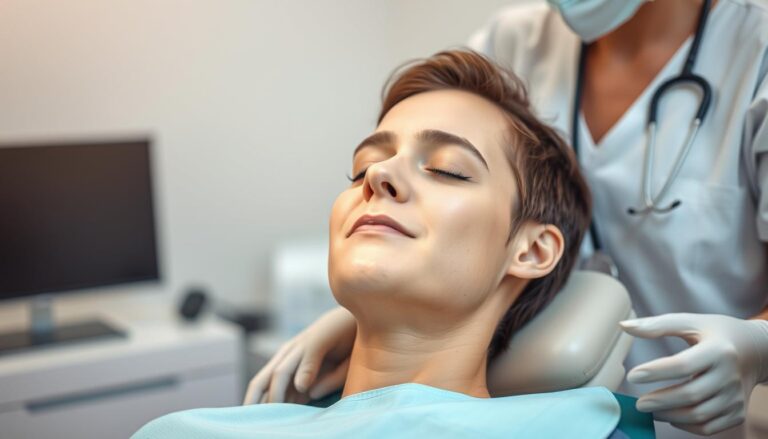Who is a Good Candidate for Invisalign Treatment?

Did you know over ten million people worldwide have chosen clear aligners to enhance their smiles? This shows a growing interest in modern alternatives to traditional braces.
So, who can get Invisalign? Teenagers and adults with mild to moderate teeth issues often qualify. These clear trays offer a discreet way to straighten teeth, fitting many lifestyles. A dental check is important to see if your teeth, gums, and habits are right for this method.
It’s all about whether a clear aligner plan fits your orthodontic needs.
Key Takeaways
- Clear aligners have gained popularity for mild to moderate alignment concerns
- Success starts with a clinical evaluation of teeth and gum health
- This treatment offers discretion and comfort
- Commitment to wearing aligners consistently is crucial
- Many individuals of different age groups meet the guidelines
Understanding Invisalign Treatment Options
Invisalign uses clear aligner trays instead of metal wires. This method is known for being discreet and gentle. It helps teeth move comfortably towards straightness.
Advanced materials are used to fit each person’s mouth perfectly. This makes the treatment efficient and avoids the need for metal brackets.
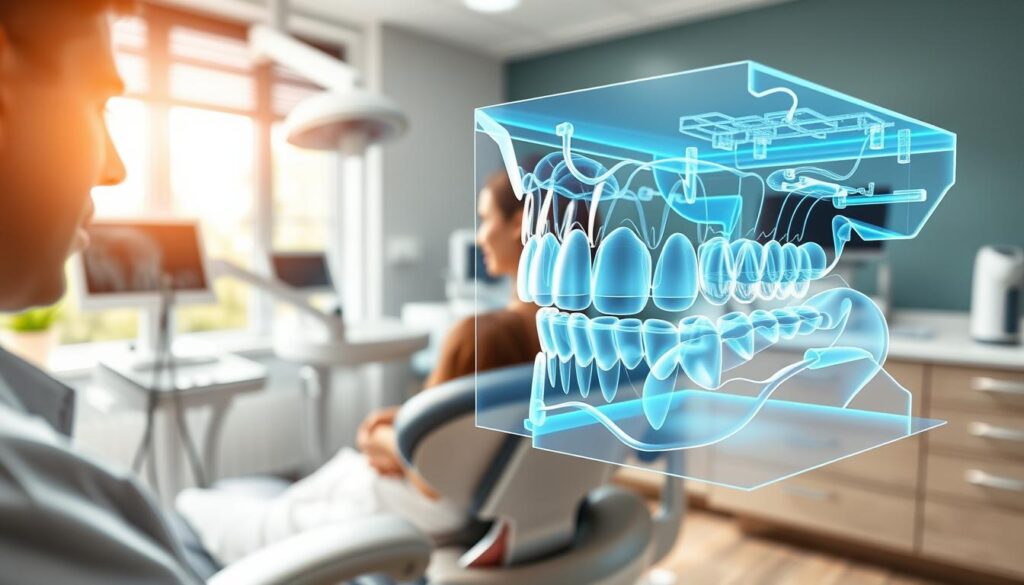
What is Invisalign?
Invisalign aligners are made from high-quality materials. They are designed based on a detailed digital scan. This ensures they fit well and work effectively.
Many people choose Invisalign because it’s almost invisible. It’s also easy to care for. The process starts with an evaluation to make sure the aligners fit right.
How Does Invisalign Work?
A dentist or orthodontist checks if you’re a good fit for Invisalign. They look at your teeth and how they bite. This helps make custom aligners.
Each aligner applies gentle pressure to move your teeth. This happens step by step. The use of scans and 3D models helps plan each stage for your unique needs.
Ideal Candidates for Invisalign
Many people like clear aligners because they mix advanced orthodontics with everyday ease. A patient’s health history and dental condition are key in deciding if they can get Invisalign. These factors help doctors choose the best treatment.
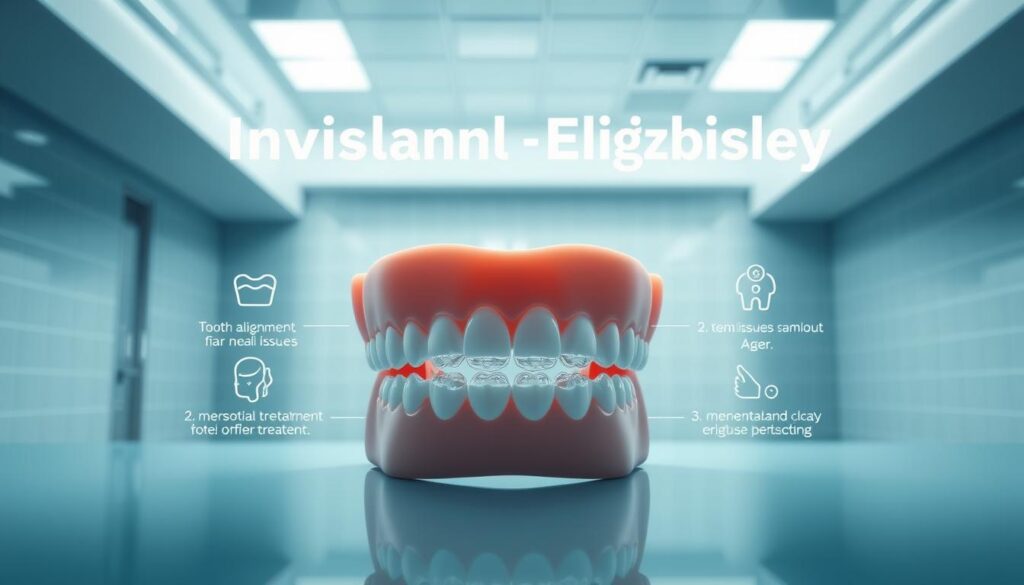
Age Considerations
Younger patients with growing teeth often get special teen aligners. Adults like how these trays are discreet in work and social settings. Before starting treatment, doctors check if the patient’s teeth and jaw are ready.
Dental Issues Suitable for Invisalign
Mostly, people with mild or moderate teeth problems are good candidates. Providers often look at:
- Crowded or overlapping incisors
- Noticeable gaps between teeth
- Slight overbite or underbite
These issues usually fit the Invisalign criteria. But, severe jaw problems might need other solutions. A detailed check-up helps find the best treatment for each person.
Research from the American Association of Orthodontists shows clear aligners are great for many alignment issues.
Common Malocclusions Treated by Invisalign
Many people with bite problems look for a discreet fix. Invisalign offers clear aligners for a variety of issues. These issues affect both comfort and looks.
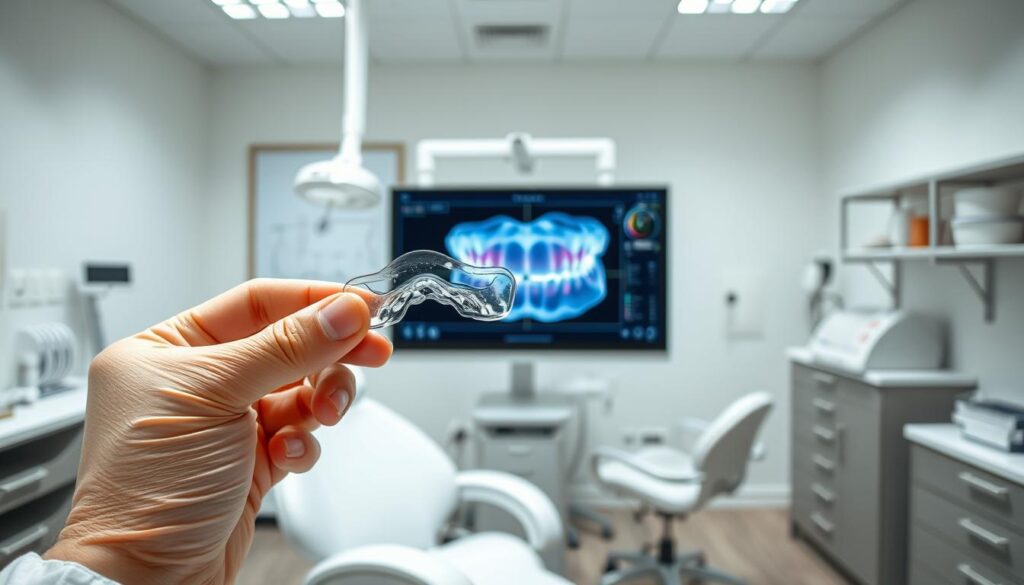
First, a detailed check-up is done. This includes a bite inspection, digital scans, and a look at Invisalign needs. This ensures a plan that fits each person’s unique teeth.
Overbite and Underbite
An overbite happens when upper teeth stick out too much. This can hurt the jaw and wear down lower teeth. On the other hand, an underbite means lower teeth stick out. Fixing these problems helps the jaw, improves chewing, and keeps teeth healthy for a long time.
Crowding and Spacing Issues
Crowded teeth can lead to plaque buildup, which is bad for gums. Gaps between teeth can trap food, causing gum problems. Invisalign fixes these issues. Regular check-ups and follow-ups, based on Invisalign needs, help make sure treatments work well.
Evaluating Your Dental Health
The journey to straight teeth starts with a solid foundation. Good care and fixing cavities or gum problems make the way smoother. This approach fits the Ideal Invisalign patient profile, showing how strong teeth help every step of treatment.

Importance of Oral Health
A strong dental base is key for precise tooth movement. Regular checks catch problems early. Experts suggest cleanings, brushing, and flossing to keep teeth and gums healthy.
- Monitor gum health through professional evaluations.
- Address minor concerns like chipped fillings.
- Adopt consistent at-home cleaning habits.
Conditions That May Disqualify Candidates
Untreated decay or severe gum disease might delay treatment. Ongoing infections can cause issues when teeth move. Dentists may need to check for implants or complex restorations. A healthy start increases the success of aligner therapy.
Benefits of Choosing Invisalign
Many people like how clear aligners are not noticeable. They fit well with active lifestyles because they are easy to use. They also look better than traditional metal braces.
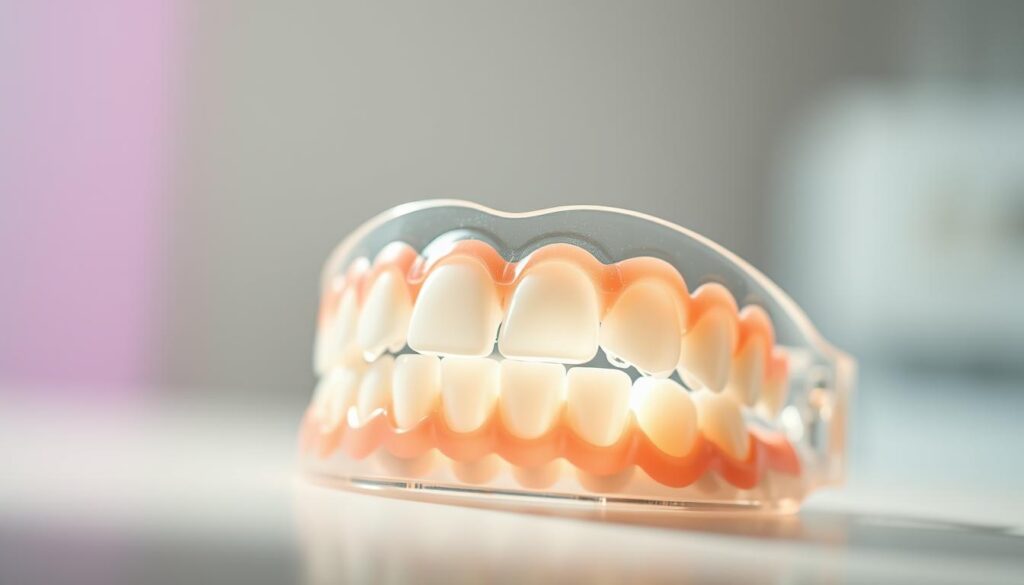
Aesthetic Appeal
The clear design helps keep your smile looking good. It’s great for those who want to look polished. It also means you can keep your treatment private.
Comfort and Convenience
Clear aligners are more comfortable than metal braces. You can take them out to eat or brush your teeth. They also don’t rub against your gums or cheeks.
- Quick cleaning of the aligner trays
- Flexible meal options
- Less time in dental appointments
This makes it a good choice for people with busy lives. Every person’s teeth are different, so treatment plans are tailored just for them.
Consultation Process for Invisalign
People start by talking about their dental history and what they want to achieve. A licensed expert then checks if they qualify for Invisalign. This includes 3D scans or impressions to see how the teeth are aligned.
What to Expect During Your Consultation
At the appointment, the dentist looks at each tooth, the gums, and how the teeth bite together. They also talk about your lifestyle, like what you eat or how busy you are. This helps figure out any special needs you might have.
Assessment of Suitability
The dentist checks your jaw, dental health, and how committed you are to treatment. They use tools to see if you’re a good fit for Invisalign. This helps both you and the dentist decide if aligners will work for you.
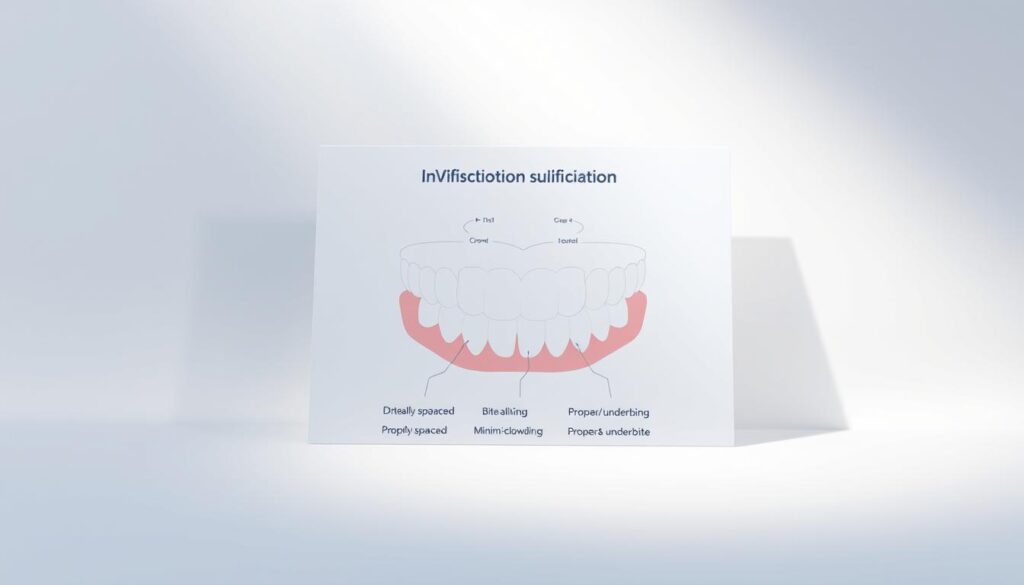
Making the Decision for Invisalign
Patients often think about the good and bad before starting Invisalign. They look at comfort and how it looks. They want to choose what works best for them and keeps their mouth healthy.
Some like that Invisalign is less visible. Others want sure results. Looking at how long it takes, how many visits, and how to keep it clean helps decide if it’s right. Experts in cosmetic dentistry can help with these issues.
Comparing Invisalign to Traditional Braces
Invisalign trays are almost invisible. Metal braces have wires that move teeth but are more noticeable. Aligners mean fewer trips to the dentist. They also help keep gums healthy because you can brush them off.
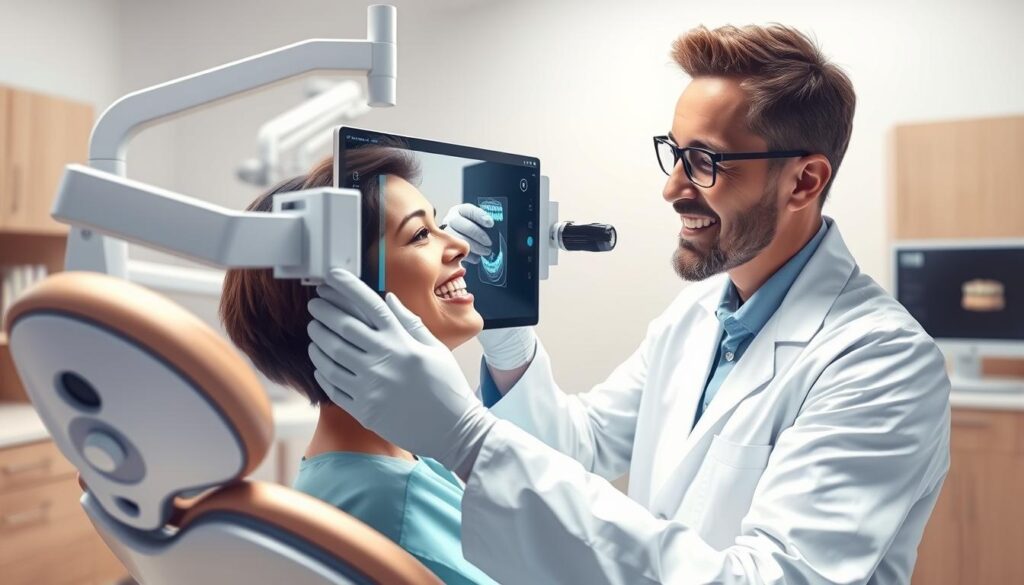
| Feature | Invisalign | Traditional Braces |
|---|---|---|
| Visibility | Nearly invisible | Metal brackets show |
| Cleaning | Removable trays | Detailed brushing around brackets |
| Comfort | Smoother and less irritating | Possible wire or bracket irritation |
| Office Visits | Less frequent | Regular wire adjustments |
Financial Considerations
Cost is a big part of deciding on Invisalign. Insurance might help pay for it. Payment plans can make it easier to afford, balancing health and personal choice.
Commitment to Treatment Success
Is using aligners every day the key to good orthodontic results? Wearing them most of the day helps teeth move steadily. This method leads to the best results and makes wearing aligners a team effort.
Importance of Compliance
Following the treatment plan is crucial for aligner therapy. Wearing them for 20–22 hours a day keeps things moving forward. This stops teeth from going back to where they started and makes the correction process more reliable.
Regular Check-ups and Maintenance
Regular visits to the dentist catch any issues early and show progress is on track. These visits also check your mouth’s health and if the aligners need changes. Keeping up with these steps boosts confidence and trust in clear aligner therapy.
Alternatives to Invisalign
Dentists offer many options for those needing orthodontic care. Some prefer fixed appliances for stability, while others like removable options for their convenience. Research keeps improving these methods, focusing on precision and comfort.
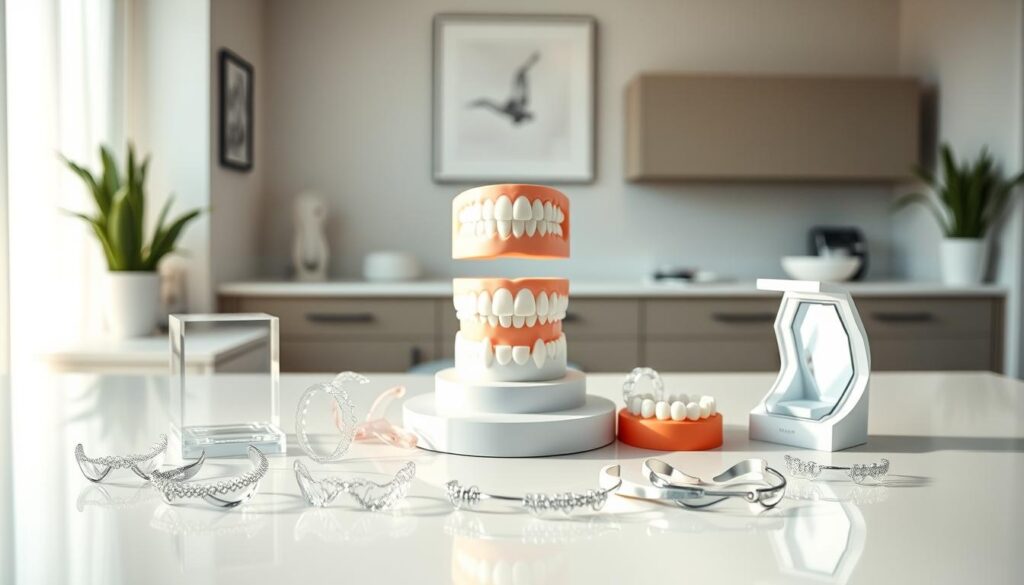
These alternatives are popular for those with specific needs or complex alignment issues. Each choice has its own benefits, based on a professional’s evaluation to find the best fit.
Traditional Braces
Metal brackets and an archwire are a classic choice. Regular adjustments help teeth move slowly. People often like:
- Durability for complex corrections
- Predictable treatment time
- Stable results for all ages
Clear Ceramic Braces
Transparent brackets match the color of teeth. They can straighten teeth quickly without visible wires. For tips on keeping teeth strong, check out healthy teeth tips.
Clear ceramic braces are great for those who want their braces to be less noticeable. They still need regular cleaning and careful food choices. Dentists might suggest them for those wanting discreet support and reliable results.
Lifespan of Invisalign Treatment
Every person’s journey with Invisalign is different. Some see results in just six months with Invisalign Express. Others might need nearly 18 months for more complex cases. The time it takes depends on how well your teeth move and the needed adjustments.
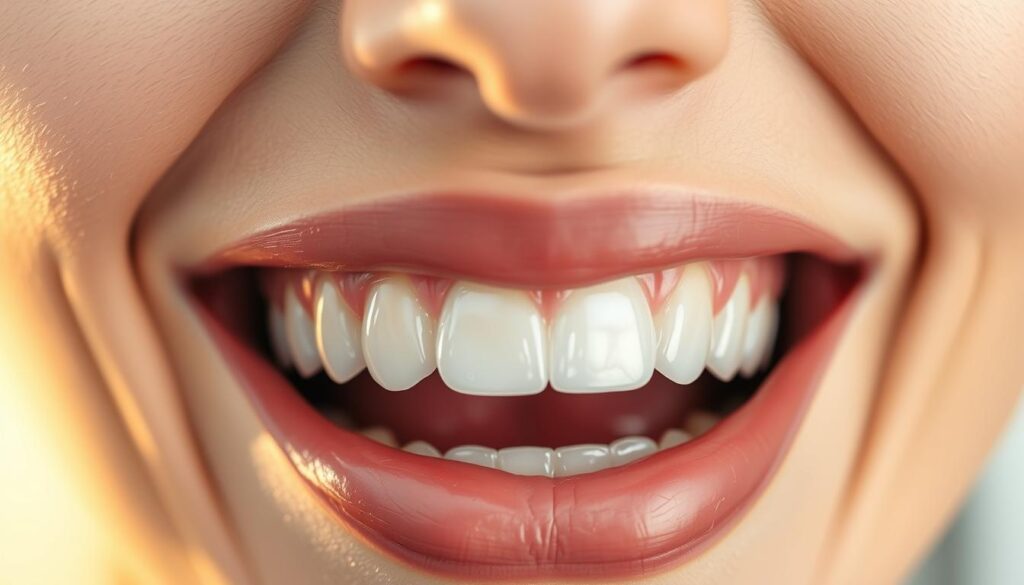
Typical Treatment Timeline
Doctors check on progress every few weeks. This ensures teeth are moving as planned. Shorter treatments fix small issues, while longer ones tackle bigger problems. Wearing aligners as directed can make the process faster.
- Keep aligners on for at least 20 to 22 hours daily.
- Replace trays according to the prescribed schedule.
- Attend follow-up appointments for timely adjustments.
Factors That Affect Treatment Duration
How severe the misalignment is matters a lot. Minor issues move faster, while big problems take longer. Growth and biological changes also affect the time needed. Regular visits help aligners keep up with these changes.
| Case Complexity | Estimated Duration | Treatment Notes |
|---|---|---|
| Mild Spacing | 3 – 6 Months | Often suitable for Invisalign Express |
| Moderate Crowding | 6 – 12 Months | Routine aligner replacements needed |
| Severe Malocclusion | 12 – 18+ Months | Possible refinements to ensure ideal outcome |
Aftercare for Invisalign Users
Invisalign aftercare keeps your teeth in their new shape. Teeth always change, so we need to keep them in line. We focus on habits that protect your teeth and prevent them from moving back.
Retainers and Their Role
Retainers help keep your teeth in the right place. You should wear them every night. This keeps your teeth from moving back to their old spots.
- Keep retainers in a protective case when not worn
- Clean them gently with mild soap to avoid distortion
- Contact a professional if any discomfort interferes with daily wear
Long-Term Dental Hygiene
Good brushing and flossing habits keep your gums healthy. Using fluoride mouthwash helps fight cavities. Regular dental visits catch problems early, keeping your smile perfect for years.
Real-Life Success Stories
These stories show how clear aligners can change lives. People talk about feeling more confident and having healthier smiles. Following up with certified providers and using aligners correctly are key to these successes.
Patient Testimonials
Experts from the American Dental Association say Invisalign users are very happy. Comfort and looks play big roles in their positive experiences. One student said:
“I saw a difference in my bite and overall alignment earlier than I expected. It reinforced my decision to stick with the plan.”
Before and After Transformations
Clincs have shown big improvements in orthodontics. Pictures show straighter teeth and better facial balance. These changes boost self-esteem. Success comes from:
- Regular visits to a trained dental team
- Following aligner use guidelines
- Keeping up with good oral hygiene
Invisalign can fix many alignment issues and make patients more comfortable. These stories prove it.
Potential Challenges with Invisalign
Many people choose Invisalign for its hidden nature. But, there can be obstacles on the way to a better smile. This part talks about what might happen as you start this new treatment.
Common Issues Faced
Some feel a bit of soreness when they start a new set of aligners. Others might notice more saliva or slight changes in how they speak. Keeping track of how long you wear your aligners can be tough, especially if you’re always busy. In some cases, the attachments on your teeth can make your gums sore.
- Temporary discomfort with each aligner change
- Routine interruptions caused by frequent removal for meals
- Challenges with consistent compliance
Solutions for Challenges
Wearing new trays before bed can help you adjust better. Setting reminders can help you remember to wear them for the right amount of time. If attachments bother your gums, using dental wax can help. Keeping your mouth and aligners clean is key to success.
The Future of Orthodontic Treatment
Invisalign and similar treatments are leading the way to better, more patient-focused care. New materials and advanced imaging help experts make more precise corrections. Digital models merge science and art, boosting confidence and driving new research.
Innovations in Clear Aligners
New materials and 3D printing have changed aligner design. These materials adapt to each person’s teeth, moving them safely and smoothly. High-tech scans capture every detail, leading to more tailored plans and faster treatments.
Trends in Cosmetic Dentistry
Research shows a shift towards less invasive treatments that keep natural enamel intact. Clear aligners fit right in, avoiding the need for metal brackets or wires. Working together, dentists and engineers create treatments that fit each patient’s life and dreams.
Procedures like shaping teeth and bonding fillings add to the options. This trend shows how technology and the desire for a beautiful smile go hand in hand.
Conclusion: Is Invisalign Right for You?
Thinking about getting a straighter smile can make you wonder about your long-term goals. Many people find that clear aligners work well with their busy lives. Your dental history, habits, and commitment to care are key in deciding if Invisalign is right for you.
Final Thoughts on Treatment Suitability
Invisalign, made by Align Technology, can fix mild to moderate teeth issues. But, it might not work for more complex problems. Wearing aligners as directed and regular dentist visits are crucial for success. Staying on track helps your teeth and ensures good results.
Encouraging a Consultation with Your Dentist
Getting advice from a dentist is essential for those in the U.S. looking to improve their smile. A dentist will check your teeth spacing, bite, and overall health to see if aligners are a good fit. Talking openly about costs, options, and your goals helps get advice that’s just right for you. A thorough check-up helps you make a choice that fits your dream smile.

